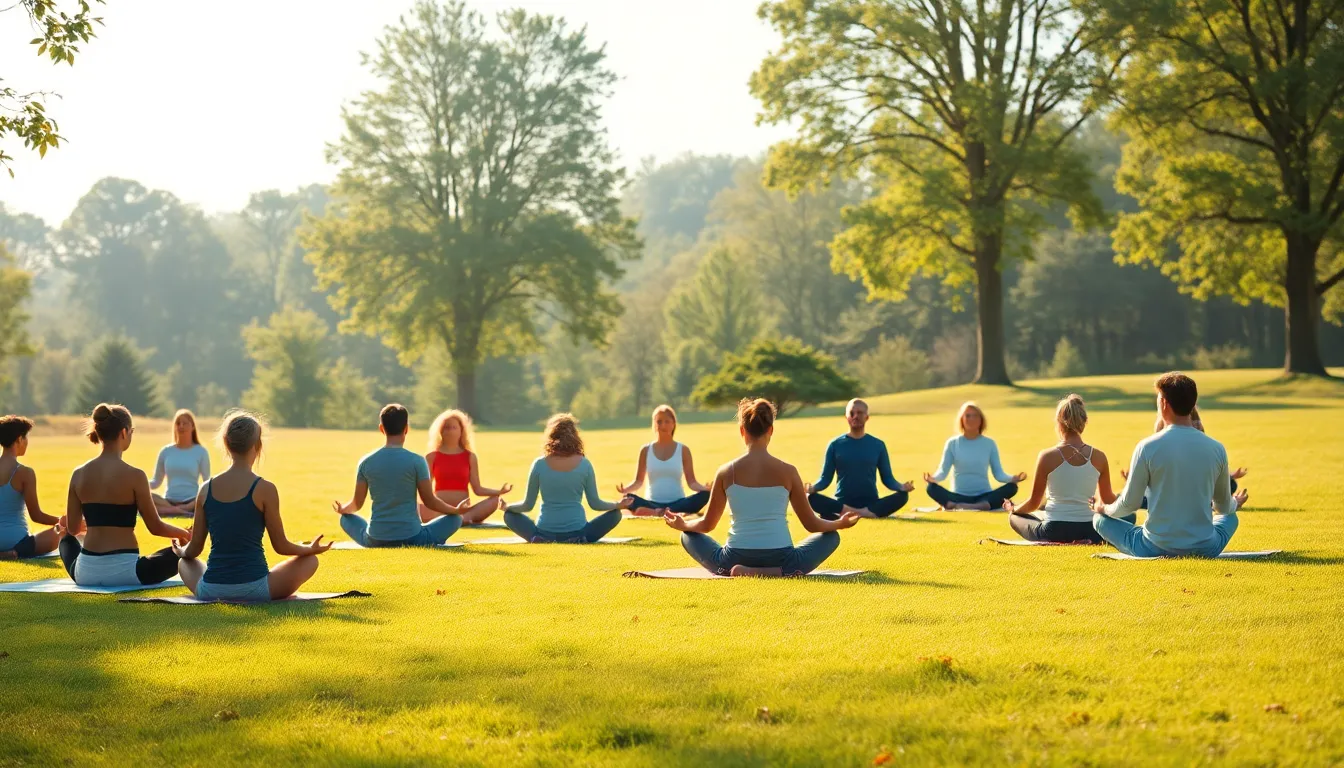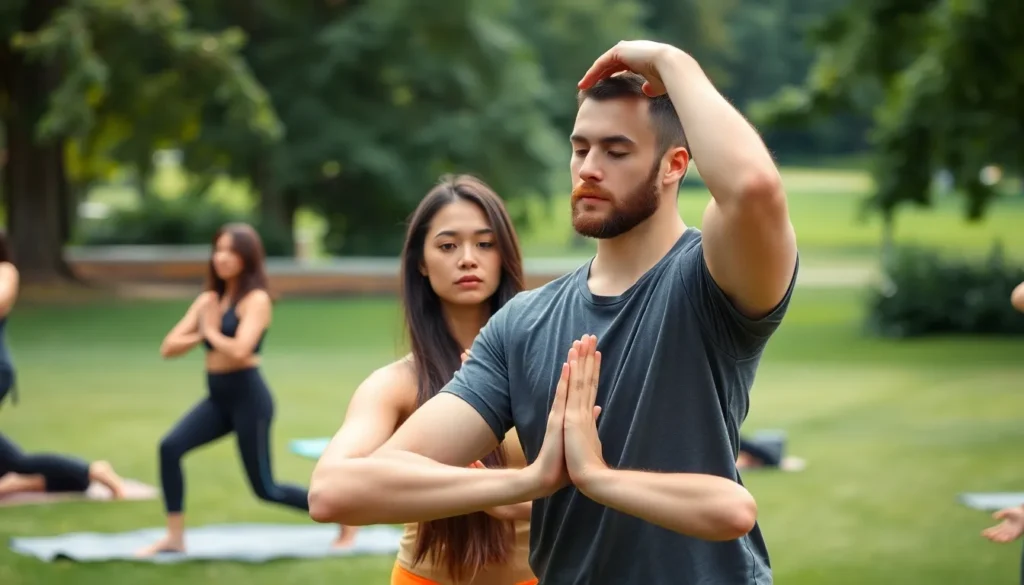Table of Contents
ToggleIn a world buzzing with chaos and constant distractions, finding peace can feel like searching for a unicorn in a haystack. But fear not! Peace practices are here to rescue sanity and sprinkle a little serenity into daily life. Whether it’s through meditation, mindfulness, or simply taking a deep breath before responding to that email from your boss, these practices offer a refreshing escape from the madness.
Imagine transforming your hectic routine into a calm oasis where stress takes a backseat and tranquility drives the car. Peace practices aren’t just for yogis in flowing robes; they’re for anyone looking to reclaim their inner zen. So buckle up and get ready to explore how these simple yet powerful techniques can help anyone navigate life’s rollercoaster with a smile and a sense of calm.
Overview of Peace Practices
Peace practices encompass various techniques aimed at promoting tranquility and reducing stress. Meditation, for example, stands out as one of the most well-known methods. It fosters a deeper connection to oneself, enabling individuals to gain clarity amidst chaos. Practitioners often find that dedicating a few minutes each day to meditation cultivates a greater sense of calm.
Mindfulness also plays a crucial role. This practice involves maintaining awareness of the present moment, acknowledging thoughts without judgment. Engaging in mindfulness helps individuals appreciate their surroundings and reduces anxiety by focusing on the here and now. Simple activities, such as mindful breathing, enhance one’s overall well-being.
Yoga represents another significant peace practice. By combining physical movement with breath control, yoga creates a harmonious balance in both body and mind. Regular yoga sessions can alleviate tension and promote relaxation. Participants in group yoga classes often report increased feelings of community and support.
Journaling offers a different approach to attaining peace. Writing thoughts and emotions can serve as a therapeutic outlet. This practice encourages reflection and processing of daily experiences, leading to emotional clarity. Individuals who journal regularly tend to experience reduced stress levels.
Nature immersion contributes significantly to peace practices. Spending time outdoors provides a powerful antidote to modern life’s distractions. Activities such as hiking or simply sitting in a park reconnect individuals with nature and promote a sense of calm. Evidence suggests these interactions with the natural world positively impact mental health.
Incorporating these peace practices into daily routines enables individuals to navigate life’s challenges with greater resilience. Committing to even small changes in lifestyle fosters a more serene state of mind.
Historical Context of Peace Practices

Peace practices have roots that stretch back to ancient civilizations, influencing modern techniques and philosophies. Understanding earlier methods helps recognize their lasting significance.
Ancient Peace Practices
Ancient cultures embraced various techniques to foster peace. For instance, Indigenous tribes often relied on rituals and ceremonies, promoting harmony within communities. In Eastern traditions, practices like meditation and tai chi emerged, embodying mind-body connections that support mental clarity. Greco-Roman philosophies introduced Stoicism, which taught resilience and emotional control, guiding individuals toward a more serene existence. These early methods laid the groundwork for contemporary practices, showing that the pursuit of inner peace has been a shared human endeavor across time.
Modern Peace Movements
Modern peace movements continue the legacy of ancient practices, advocating for social change and inner tranquility. Grassroots organizations, like the Quakers, emphasize nonviolence and meditation. Globally, the mindfulness movement has gained traction, encouraging individuals to integrate awareness into daily lives. Humanitarian efforts often include conflict resolution workshops, promoting understanding and mutual respect. These initiatives foster community well-being and highlight the importance of collective efforts in creating a peaceful society. Ultimately, modern movements reflect an ongoing commitment to achieving peace in diverse contexts and cultures.
Types of Peace Practices
Peace practices encompass numerous strategies and activities aimed at fostering harmony and understanding. These methods strengthen individual well-being and promote collective peace.
Conflict Resolution Strategies
Conflict resolution strategies help individuals navigate disputes effectively. Techniques like active listening enable parties to comprehensively understand each other’s perspectives. Mediation facilitates productive dialogue guided by a neutral party, allowing for collaborative solutions. Restorative justice provides a framework for affected individuals to address harm and rebuild relationships through accountability. Training programs focus on skill development to empower leaders in conflict scenarios, reducing escalation and promoting peaceful resolutions. Implementing these strategies creates a supportive environment, encouraging respect and understanding across diverse groups.
Community Building Activities
Community building activities foster connections among individuals, enhancing social cohesion. Events like workshops or potlucks encourage shared experiences and dialogue within community members. Volunteer opportunities not only address local needs but also create a sense of shared purpose. Initiatives like neighborhood clean-ups strengthen bonds through collaborative work. Group discussions about common interests lead to shared understanding and support networks. Regular engagement through these activities cultivates a peaceful, inclusive atmosphere where everyone feels valued and connected.
The Role of Education in Peace Practices
Education plays a crucial role in advancing peace practices. Through structured programs, individuals gain skills necessary for conflict resolution and emotional intelligence.
Peace Education in Schools
Peace education in schools nurtures students’ understanding of conflict resolution. Programs often include topics like empathy, cooperation, and respect for diversity. Students engage in discussions and activities that promote awareness of global issues, fostering a sense of responsibility. This approach cultivates critical thinking and prepares young individuals to tackle societal conflicts. Evidence shows that peace education reduces bullying and aggression, contributing to a more harmonious school environment.
Workshops and Training Programs
Workshops and training programs enhance peace practices within communities. These initiatives focus on equipping participants with tools for effective communication and mediation skills. By bringing together diverse groups, workshops foster dialogue and understanding. Training often includes real-life scenarios where participants practice conflict resolution techniques. Research indicates that community members who undergo training are more likely to engage in peaceful interactions. These programs create a supportive network, reinforcing collective peace-building efforts.
Challenges to Implementing Peace Practices
Implementing peace practices faces several significant challenges. Societal barriers often hinder progress in promoting these techniques.
Societal Barriers
Cultural norms may discourage open discussions about mental health and emotional well-being. Many individuals perceive peace practices as self-indulgent rather than essential for personal growth. Access to resources presents another challenge, as underserved communities lack facilities and trained professionals to teach these practices. Stigma surrounding mental health can deter participation in programs focused on mindfulness and meditation. Furthermore, misinformation about these practices may lead to skepticism, making potential practitioners hesitant to engage. Building awareness and addressing these misconceptions can pave the way for broader acceptance and implementation.
Political Resistance
Political resistance often influences the effectiveness of peace practices. Government policies may prioritize economic growth over mental health initiatives, undermining support for such practices. Funding for community-based programs might face cuts, diminishing access to valuable resources. Regulations can inhibit grassroots organizations from promoting meditation and conflict resolution in schools. Additionally, competing interests may divert attention from peace building, limiting collaborative efforts. Advocacy and lobbying for comprehensive mental health strategies can help overcome these barriers, fostering an environment that embraces peace practices for the greater good.
Embracing peace practices is essential for navigating the complexities of modern life. By integrating techniques like meditation, mindfulness, and community-building activities, individuals can cultivate a more serene existence. These practices not only enhance personal well-being but also foster connections among diverse communities.
As society faces ongoing challenges, the importance of advocating for peace practices becomes even more critical. Education plays a vital role in equipping future generations with the skills needed for conflict resolution and empathy. Overcoming societal barriers and stigma surrounding mental health will pave the way for a more peaceful world.
Ultimately, the journey toward inner peace is a collective endeavor that requires commitment and understanding from everyone. By prioritizing these practices, individuals can contribute to a harmonious society where everyone thrives.




